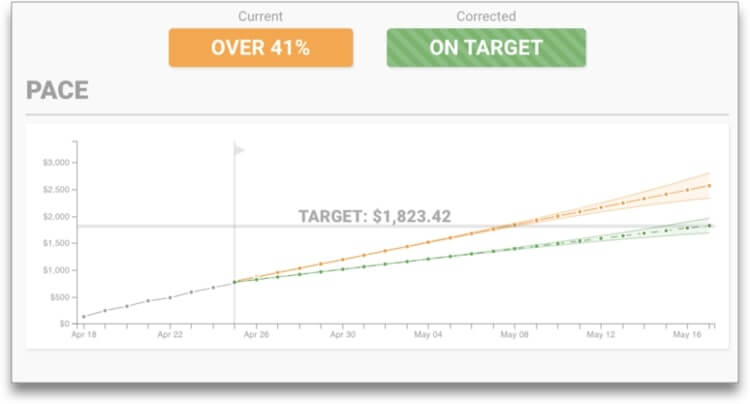One of the biggest reasons spend issues can quickly grow out of control is lack of frequent and consistent oversight of campaign performance.
It can be easy for a digital advertiser to set aside internal performance reporting (for the purpose of making optimization decisions) when they’re mired down by a lack of time, too many tasks, or the wrong technology. Worse yet, some advertisers don’t have a system in place for budgeting and merely make calculations in their head or optimize by gut feel.
But even with systems and processes in place, the most advanced advertisers can make tracking mistakes as well. A slight flaw in an Excel formula or a mistyped budget number can create a spend disaster.
Whether you use Excel, scripts, or ppc monitoring tools, reviewing your budgets at a high level should be quick and easy, while providing the option to dig down into more granular detail if you need it. At the very least, we recommend that your budgeting report include the following:
- Budget Cycle Length
- Budget Cap
- Spend to Date (for Current Budget Cycle)
- Available Budget Remaining
- Percentage Budget Spent
- Recommended Daily Spend (to Achieve Budget Cap)
- Important KPIs
You should be able to understand the health of your campaigns and budgets quickly with your budgeting monitoring tool. For example, you can view budget pacing reports for clients using Shape's Budget Pacer tool.
We recommend implementing tracking redundancies to make sure you can uncover spend discrepancies or errors quickly, especially when working with Google Ads budgets due to the 2x daily spend rule. Automate if at all possible, and of course, look for a solution that supports all of your channels and networks (see the Pros and Cons of Common Budget Management Solutions for a more detailed analysis.)



